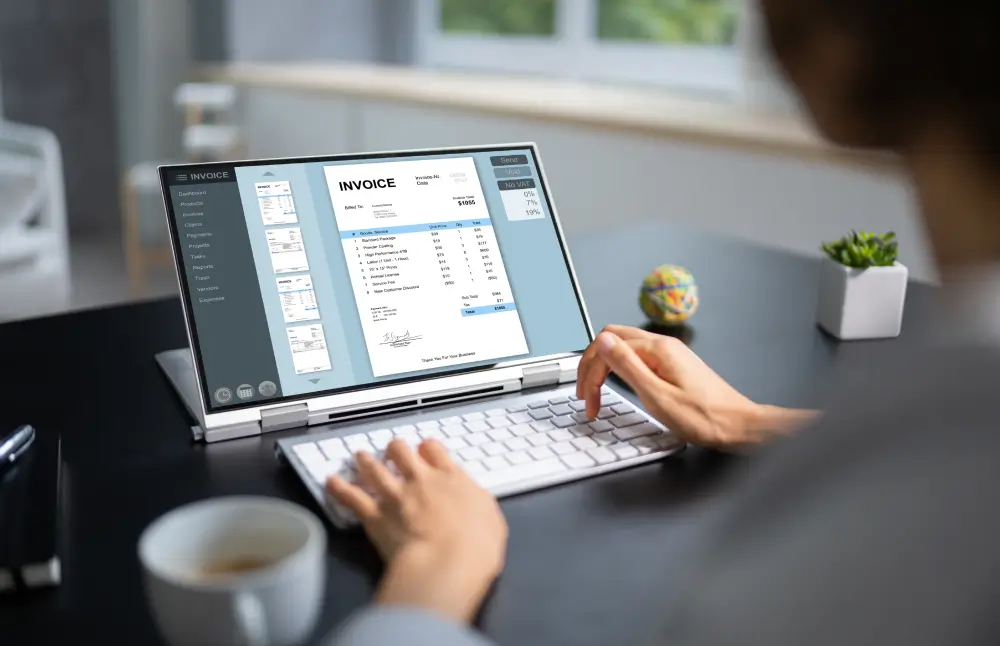Overview
Payment authorization is a vital function within accounts payable, ensuring that every transaction is valid, approved by the right individuals, and aligned with internal policies. It’s not just a matter of managing expenses; it’s a safeguard against fraud, errors, and financial inefficiencies. However, as invoice volumes and vendor relationships grow, manual authorization methods often become roadblocks. This is where automation becomes a game-changer, empowering AP teams with faster, more accurate, and more transparent processes.
What is Payment Authorization?
Payment authorization is the process of reviewing and approving invoices before releasing funds. This step ensures that all payments are:
- Accurate and matched with purchase orders and delivery receipts
- Approved by the relevant stakeholders
- Compliant with internal controls and regulatory requirements
In a manual system, this usually involves printing invoices, chasing down department heads for signatures, and compiling spreadsheets to track approvals — often leading to delays, miscommunication, and errors.
The Challenges of Manual Payment Authorization
- Lack of Visibility: Finance teams struggle to get real-time insight into invoice status, pending approvals, and cash flow.
- Approval Delays: Invoices can sit in someone’s inbox or desk for days or even weeks, delaying payment and risking late fees or strained vendor relationships.
- Risk of Fraud or Duplication: Without strong controls, unauthorized payments can slip through, or invoices may be paid twice.
- Audit Headaches: Proving compliance and reconstructing the authorization trail for auditors becomes time-consuming and stressful.
- High Operational Costs: Time spent on manual routing, data entry, and follow-ups adds to the cost per invoice.
SmartBooqing insight: Automation isn’t just a tech upgrade but a workflow transformation. A well-scoped project leads to a smoother rollout and faster ROI.
How Automation Transforms Payment Authorization?
1. Streamlined Approval Workflows
With automation software, you can configure multi-level approval workflows that are triggered automatically based on rules like invoice amount, department, or vendor.
For example, an invoice over $5,000 might require approval from both the department head and the CFO.
For example, an invoice over $5,000 might require approval from both the department head and the CFO.
- Approvals are routed instantly to the right people.
- Approvers receive real-time alerts and can approve or reject invoices with a click.
- No more chasing the system handles the follow-ups.
2. Centralized and Real-Time Visibility
AP automation platforms give you a centralized dashboard where you can track every invoice’s journey from receipt to payment.
- You know exactly who has approved what and when.
- Bottlenecks can be quickly identified and resolved.
- Executives can make informed decisions with up-to-date insights into liabilities and cash flow.
SmartBooqing edge: We’ve designed our platform with all of these in mind, especially when it comes to speed, scalability, and seamless ERP connectivity.
3. Improved Accuracy and Fraud Prevention
Automation reduces manual data entry and allows for three-way matching — ensuring that the invoice matches the purchase order and the delivery receipt before approval.
- Duplicate payments are flagged automatically.
- Out-of-policy or suspicious invoices are flagged for review.
- The audit trail is captured digitally, making compliance effortless.
4. Faster Turnaround and Better Vendor Relationships
With streamlined approvals, invoices move faster through the pipeline and the vendors get paid on time or even early.
- Avoid late fees and penalties.
- Strengthen supplier trust and potentially unlock early payment discounts.
- Reduce inquiries from vendors about payment status.
5. Scalability and Efficiency
As businesses grow, invoice volume increases, but that doesn’t mean more headcount or stress.
- Invoice approval time reduced by 60%
- Late payments dropped by 90%
- Audit preparation time cut in half
- Employee satisfaction improved, as AP staff could focus on strategic tasks instead of mundane follow-ups
Use Case: How a Mid-Sized Company Benefited from Automation
A mid-sized manufacturing company processes over 2000 invoices monthly manually. Due to which, the finance team was bogged down with chasing approvals, correcting errors, and preparing documentation for audits.
After implementing an AP automation solution, the results were immediate:
- Automated systems can process hundreds or thousands of invoices simultaneously.
- AP teams can focus on exceptions rather than chasing every invoice.
- Teams become more strategic, spending time on analysis and vendor management rather than data entry.
Getting Started with AP Automation
- Evaluate your current process: Identify bottlenecks, approval delays, and error-prone areas.
- Define your workflows: Decide who should approve what and under which conditions.
- Choose the right tool: Look for platforms that integrate with your accounting or ERP software, support customizable workflows, and offer robust reporting.
- Train and onboard your team: Ensure all stakeholders understand the new process and are comfortable using the system.

Conclusion
Manual payment authorization processes are no longer viable for businesses aiming to grow, stay competitive, and mitigate financial risk. In today’s fast-paced environment, relying on spreadsheets, email chains, or paper-based approvals only slows down operations and exposes organizations to costly errors and compliance issues.
Automation is not just a solution; it is a strategic advantage. By implementing automated authorization workflows, accounts payable teams can ensure faster approvals, enforce policy compliance, prevent duplicate or unauthorized payments, and gain real-time visibility into cash flow.
Smartbooqing makes this transformation seamless. With customizable approval hierarchies, intelligent routing, and real-time tracking, Smartbooqing automates the entire payment authorization process from invoice intake to final approval. It enables teams to move away from manual follow-ups and toward a streamlined, secure, and fully auditable process.
What was once a routine task now becomes a strategic function. It drives cost savings, enhances compliance, and gives finance teams the control and clarity they need to make smarter decisions more quickly. With Smartbooqing, payment approvals are no longer a bottleneck; they have become a powerful enabler of efficiency and growth.



